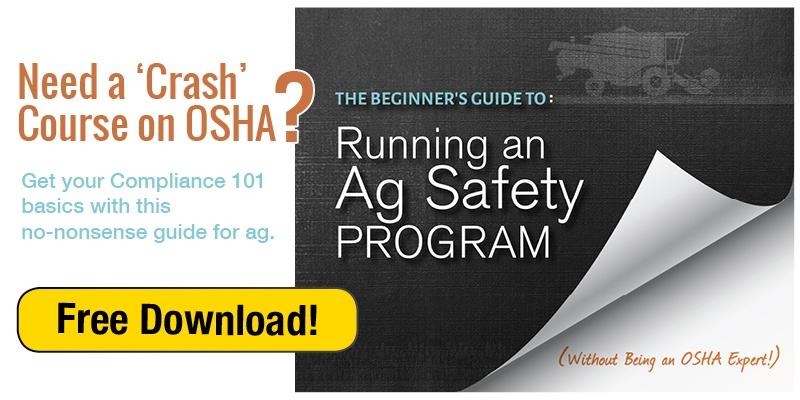Ah, the great outdoors—crisp, clean air and the refreshing smell of morning dew! Yes, this is just one of the reasons many of us really love farming. On the other hand, does farming generate hazards for our respiratory systems? Not only is the answer a resounding “yes,” but some of the most treacherous respiratory dangers are actually unique to farming.

Perhaps you’re aware, for example, of how many people die each year after they have entered a manure pit without respiratory protection. The hydrogen sulfide and other biological gases, concentrated in such a confined space, can easily overwhelm an unsuspecting employee. Worse, reports exist of multiple deaths in several incidents, when one person after another enters a pit, trying to save a co-worker or family member. It’s tragic. And, like virtually every farm accident, it is avoidable when farm workers put safety first.
This week's Farm Safety Tips covers a list of the most important respiratory protection safety points.
Check with your supervisor about the respiratory threat level.
Talk with your supervisor to evaluate the respiratory hazards associated with your work, and whether or not you need to wear a respirator.
Maximize ventilation.
See what you can do to eliminate or reduce any respiratory hazards by improving ventilation or making better choices.
Always refer to OSHA's Safety Data Sheets (SDS).
If your work assignment involves a chemical, the best source for hazard information is the chemical’s SDS. Review it carefully.
Make sure you’re using the right respirator, and check that it fits you.
If you need to wear a respirator—either for use as you work or to keep on standby for a potential emergency—ensure you have the right type of respirator and that it fits correctly.
Have an evacuation plan.
If the respiratory conditions are serious enough, establish your escape route from the work area.
Check the respirator prior to use for wear and tear.
Be sure to examine the respirator for damaged, worn-out parts or other issues that can affect its ability to function and protect you.
Never try to adjust or repair a respirator in a hazardous environment. Get clear of the area first.
In the event you find yourself in a dangerous situation, and you do have a respirator problem, move away from the hazard, and then fix the equipment problem before returning to the site.
Remember, when you have finished the job, you still have a few tasks you need to do. When the job is done, clean and disinfect the respirator—every time. Then, store and maintain it, according to the manufacturer’s instructions.



